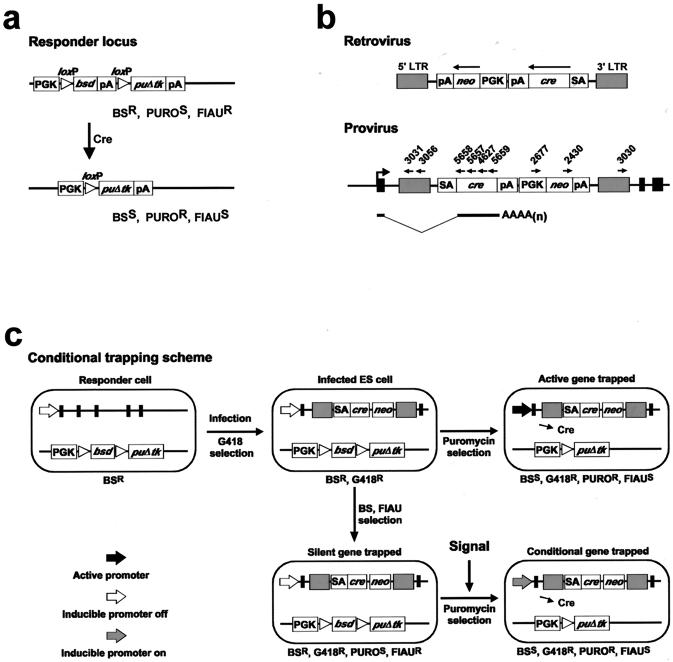FIG. 1.
Design of the inducible gene trapping system. (a) The first component is an ES cell carrying a responder construct which allows the cell to respond to transient Cre expression by permanent drug resistance switching. In the uninduced state, the responder construct provides blasticidin S resistance. Cre-catalyzed recombination between the loxP sites switches the responder construct to provide resistance to puromycin. (b) The second component of the system is a ROSAcre retroviral vector, which carries cre as a reporter gene which is activated by 5′ gene trapping. The expression pattern of the promoterless cre reporter in the provirus will reflect the expression pattern of the trapped gene. (c) Two possible pathways activate the cre reporter and lead to permanent drug resistance switching in the responder ES cells. If the ROSAcre vector traps a gene which is active in ES cells, the cre reporter will be activated and catalyze recombination between the loxP sites, rendering the cell puromycin resistant. If the ROSAcre vector traps a silent gene and the trapped gene can respond to a signaling molecule or a biological event of interest, the cre reporter will be activated and puromycin resistance will be obtained. LTR, long terminal repeats; SA, splice acceptor; cre, cyclization recombinase coding region; pA, polyadenylation signal; PGK, phosphoglycerate kinase 1 promoter; neo, neomycin phosphotransferase; bsd, blasticidin S deaminase; puΔtk, fusion-selectable marker between puromycin N-acetyltransferase and a truncated version of herpes simplex virus 1 thymidine kinase. For clarity, the PGK promoter and polyadenylation signals are omitted from panel c.

